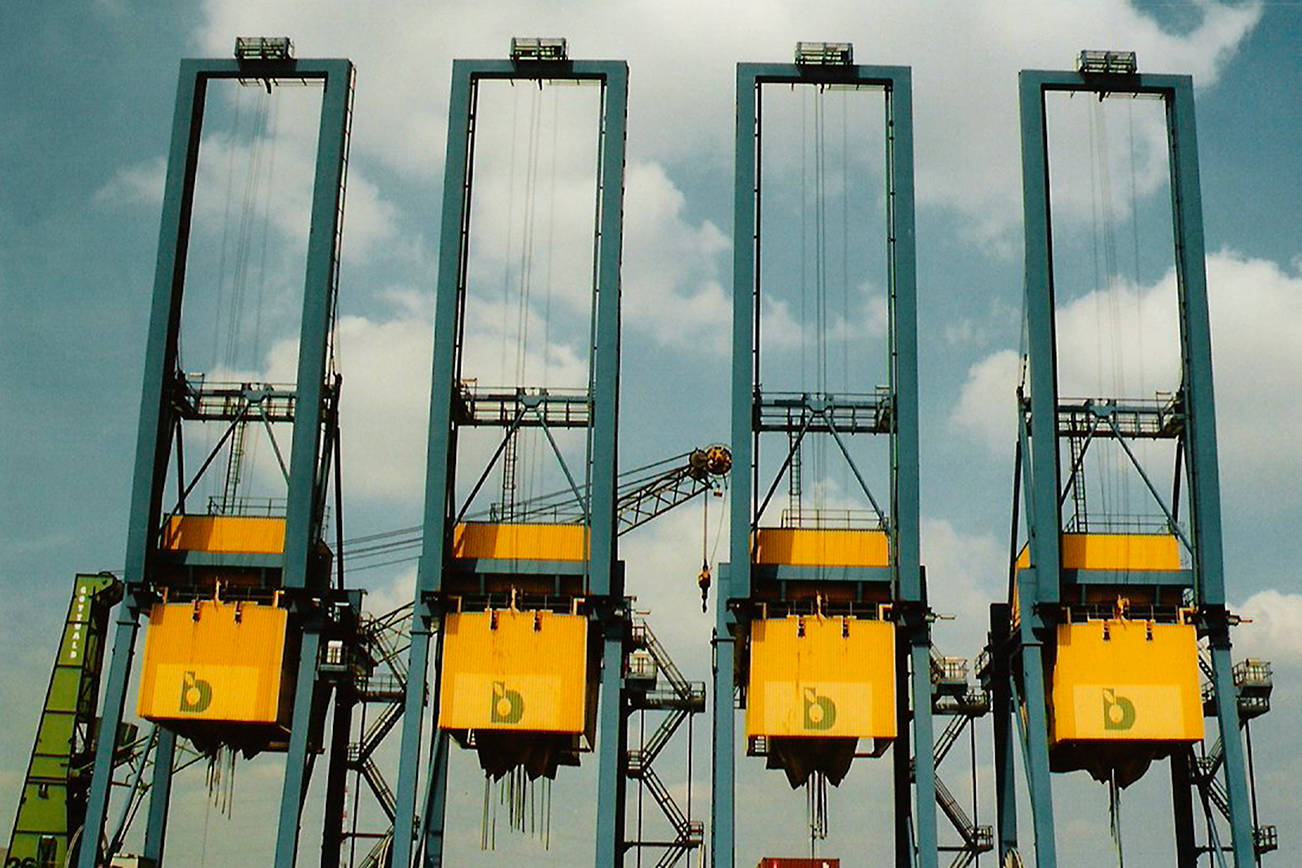While many eyes are fixed on trade talks between our country and China, leaders at America’s ports are positioning their seaports to compete for increasing volumes of container traffic.
Although container shipments surged in November, primarily from pre-tariff contracts, they plunged by the end of the year under the buffetings of the U.S. and China trade war.
Outbound container volume at the neighboring ports of Los Angeles and Long Beach fell 11.8 percent in November from the same month in 2017. That decline followed seven straight months of export growth.
But looking ahead, the stiff competition between East and West Coast ports for container shipments is ramping up. The new Panama Canal, which opened in 2016, has catalyzed that growth.
Ships carrying up to 14,800 containers can now navigate the canal, bypassing Washington ports. Shippers from southern and eastern states now have a cost-effective alternative to reach Midwestern markets.
The older canal could accommodate ships with 5,000 containers, but it was a bottleneck, causing up to 30-hour delays just to get a time to enter the canal. No more.
After the new canal opened, tonnage over the first 16 months increased by 23 percent. Boss Magazine estimates that seaports from New York to Georgia now handle nearly a quarter of the container traffic and are building for more.
As Robert McNab, an economics professor at Old Dominion University in Norfolk, Va. recently told the Associated Press, an “arms race” is underway, as ports try to make room for the larger ships.
Eastern seaports are making significant investments to attract container business. Among their investments are projects to dredge deeper channels in Georgia and in South Carolina. Part of a bridge has been elevated to allow bigger ships to reach New York City-area ports.
The Georgia Ports Authority, which owns and operates the Port of Savannah, expects to spend $1.5 billion over the next decade to install taller cranes, add storage capacity, and invest in a cutting-edge computer system that connects trucks to containers much quicker.
Georgia is spending another $120 million on road improvements near the port to move containers more rapidly to highways and railroads – something Washington desperately needs to do.
The Virginia Port Authority has already started positioning the world’s largest cranes to handle containers from the larger ships. The new gantries are 170 feet tall. Virginia is spending $350 million to dredge its shipping channel from 50 to 55 feet.
Big container ships are coming to Washington ports, too. They are behemoths. Stand one upright, and it is taller than the Empire State Building.
There are opportunities for Washington. The ports of Seattle and Tacoma recently formed an alliance to lure the new 20,000 container ships that are too big for the new canal. They are deepwater ports and can accommodate ships requiring more than 50-foot drafts, but the roadways leading to the ports are heavily congested.
Competing requires more than deep water. All ports must be capable of streamlining container handling dockside, which can lead to costly labor disputes.
There is a lot at stake.
According to a recent economic study at the College of William & Mary, 343,000 Virginia jobs – nearly 10 percent of the state’s workforce – are linked to port activity across the six seaport terminals. Those jobs generate $13.5 billion in annual compensation and $1.2 billion in state and local taxes.
Exports from Washington helped contribute to the $2.33 trillion of U.S. goods and services exports in 2017, according to the U.S. Dept. of Commerce. At last count, port activities generate 194,000 jobs in our state.
Keeping Washington competitive for container shipment requires added attention. Costs and efficiencies will drive new investments.
Don C. Brunell is a business analyst, writer and columnist. He recently retired as president of the Association of Washington Business, the state’s oldest and largest business organization, and now lives in Vancouver. He can be contacted at theBrunells@msn.com.
Talk to us
Please share your story tips by emailing editor@kentreporter.com.
To share your opinion for publication, submit a letter through our website https://www.kentreporter.com/submit-letter/. Include your name, address and daytime phone number. (We’ll only publish your name and hometown.) Please keep letters to 300 words or less.

